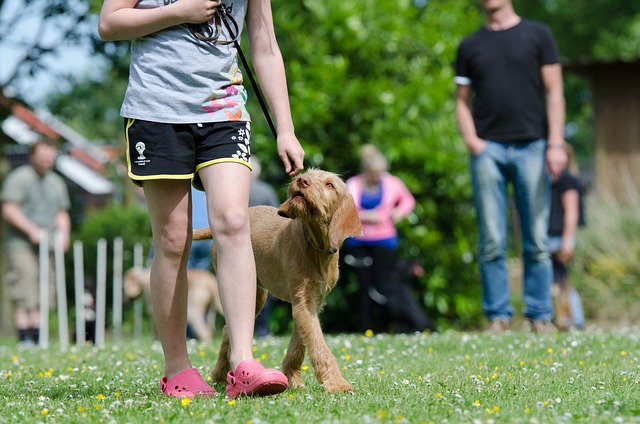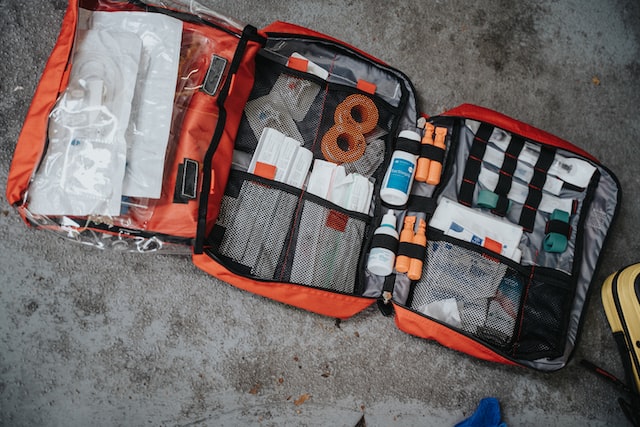- 1. Understanding the Role of a Psychiatric Service Dog
- 2. What is Psychiatric Service Dog Public Access Training?
- 3. Why is Public Access Training Crucial for PSDs?
- 4. The Legal Framework: Rights and Responsibilities
- 5. Selecting the Right Candidate for PSD Public Access Training
- 6. Professional vs. Self-Training: What's Best?
- 7. Essential Training Components for PSD Public Access
- 8. Advanced Training Techniques for Challenging Situations
- 9. Preparing for Public Access Certification
- 10. Troubleshooting Common Challenges
- 11. Maintaining PSD Public Access Training Over Time
- 12. Conclusion: Empowering Independence and Support

Psychiatric Service Dogs (PSDs) are incredible companions that provide invaluable support to individuals dealing with mental health conditions such as anxiety, depression, PTSD, and bipolar disorder. These highly trained canines offer not just emotional solace but also assistance in daily tasks, making life more manageable for their handlers.
However, for a Psychiatric Service Dog to be truly effective, it must be proficient in public access training. This type of training ensures that PSDs can accompany their handlers in various public places while maintaining appropriate behavior and composure. In this comprehensive guide, we'll explore the ins and outs of Psychiatric Service Dog Public Access Training, including what it entails, its importance, and how to go about it.
1. Understanding the Role of a Psychiatric Service Dog
Psychiatric Service Dogs are not mere pets; they are lifelines for individuals grappling with mental health conditions. These conditions can be just as debilitating as physical disabilities, and PSDs provide much-needed assistance. Their roles encompass:
-
Providing Deep Pressure Therapy: During panic attacks or anxiety episodes, PSDs can apply deep pressure through sitting or placing their chin on the handler's lap, bringing comfort and calm.
-
Alerting to Oncoming Episodes: PSDs can be trained to detect subtle behavioral cues that precede psychiatric episodes, allowing their handlers to take preventive measures.
-
Creating Personal Space: In crowded or anxiety-inducing environments, PSDs can create a physical barrier by standing or circling around their handlers, providing a sense of security.
-
Medication Reminders: They remind their handlers to take medications on time, helping to maintain treatment regimens.
-
Grounding Techniques: For individuals with PTSD, PSDs offer grounding techniques during dissociative episodes to help them reconnect with reality.
2. What is Psychiatric Service Dog Public Access Training?
Psychiatric Service Dog Public Access Training is a specialized form of training that ensures these dogs are well-behaved and reliable when accompanying their handlers in public places. It focuses on teaching them to remain calm, obedient, and attentive while navigating various environments and situations.
3. Why is Public Access Training Crucial for PSDs?
Public access training is pivotal for several reasons:
-
Legal Rights: It enables PSD handlers to exercise their legal rights to have their service dogs accompany them in public spaces, including restaurants, stores, public transportation, and workplaces.
-
Safety and Behavior: Proper training ensures that PSDs behave appropriately in public, reducing the risk of accidents or disruptions.
-
Reducing Stress: Well-trained PSDs are less likely to become stressed or anxious in crowded or noisy places, benefiting both the dog and its handler.
-
Increasing Independence: PSDs trained for public access empower their handlers to lead more independent lives, actively participating in various community activities.
4. The Legal Framework: Rights and Responsibilities
Understanding the legal framework surrounding PSDs and public access rights is crucial. In the United States, the Americans with Disabilities Act (ADA) is the primary legislation that governs these rights. Under the ADA:
-
Public Access: PSDs have the right to accompany their handlers in nearly all public places, including restaurants, stores, theaters, and public transportation.
-
Workplace Rights: Employers must make reasonable accommodations to allow PSDs to assist their handlers in the workplace.
-
Housing Rights: PSDs are exempt from pet-related restrictions in housing, including breed or weight limits, pet fees, and deposits.
However, while these rights exist, PSD handlers also have responsibilities, such as ensuring their dogs are well-trained and behave appropriately in public.
5. Selecting the Right Candidate for PSD Public Access Training
Not all dogs are suitable for public access training. When selecting a candidate, consider factors like:
-
Temperament: The dog should have a stable and calm temperament, not prone to aggression or excessive anxiety.
-
Health: Ensure the dog is in good health and physically capable of handling the demands of public access.
-
Age: While PSD candidates can be puppies, they must have the maturity to handle public environments.
-
Breed: While breed isn't the sole determinant, certain breeds may be better suited for PSD work due to their temperament and size.
-
Compatibility: The dog should be a good match for the handler's specific needs and lifestyle.
6. Professional vs. Self-Training: What's Best?
Training a PSD for public access is a rigorous task that requires expertise. While some handlers attempt self-training, it's often advisable to seek professional help. Professional trainers have experience in addressing the unique challenges of public access training and can ensure that the dog meets the necessary standards. The exciting news is that SDTSI's service dog training courses offer a unique combination of both aspects. This allows individuals to benefit from a comprehensive program that encompasses the best of both worlds.
By taking our service dog training courses, handlers can benefit from the expertise of certified professionals and have access to experienced trainers who are available for additional support. Our online program provides in-depth instruction on teaching tasks along with training tips for handlers. This way, you will be able to work confidently with your PSD and make sure that he or she is always ready for any situation. Plus, our courses provide an opportunity to practice and hone your skills in a safe environment before taking your dog into the public.
7. Essential Training Components for PSD Public Access
Successful public access training covers various essential components, including:
-
Basic Obedience: A well-trained PSD should respond promptly to commands like "sit," "stay," "heel," and "come."
-
Socialization: Exposure to diverse environments, people, and other animals is crucial to ensure the dog remains calm and composed.
-
Distraction Training: PSDs need to stay focused on their handlers in distracting environments.
-
Task Training: Training for specific tasks that address the handler's psychiatric disability, such as grounding or alerting.
8. Advanced Training Techniques for Challenging Situations
Public access training must prepare PSDs for challenging situations, such as navigating crowded spaces, handling unexpected loud noises, or responding to medical emergencies. Advanced techniques can include simulated scenarios to acclimate the dog to various challenges.
9. Preparing for Public Access Certification
Certification isn't mandatory under the ADA, but some handlers choose to obtain it to provide added assurance of their dog's training. Certification processes can vary, but they often involve an evaluation of the dog's behavior and adherence to training standards.
10. Troubleshooting Common Challenges
Public access training can present challenges. Common issues include fear or aggression towards other dogs, distractions, or anxiety in certain environments. Professional trainers can help address these challenges.
11. Maintaining PSD Public Access Training Over Time
Training doesn't stop once certification is obtained. PSDs require ongoing practice and reinforcement of their training to remain effective. Handlers should continue to work with their dogs and address any new challenges that arise.
12. Conclusion: Empowering Independence and Support
Psychiatric Service Dog Public Access Training is a crucial step in ensuring that these remarkable animals can provide the support and assistance their handlers need while navigating the complexities of the public sphere. By understanding the training process and the legal framework surrounding PSDs, individuals with mental health conditions can experience increased independence, reduced symptoms, and enhanced well-being with their trusted companions by their side. Whether you're considering obtaining a PSD or are in the midst of training, remember that this journey is not just about training a dog; it's about unlocking a world of possibilities and support for those who need it most.
In conclusion, Psychiatric Service Dog Public Access Training is a vital aspect of ensuring that these exceptional dogs can provide the much-needed support and assistance to their handlers while navigating the challenges of the public sphere. By comprehending the training process and the legal framework surrounding PSDs, individuals dealing with mental health conditions can experience greater independence, symptom alleviation, and improved well-being with their faithful companions by their side. Whether you're contemplating getting a PSD or are currently engaged in training, remember that this journey transcends mere dog training; it's about opening up a world of opportunities and support for those who require it the most.












